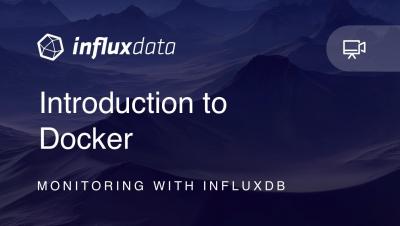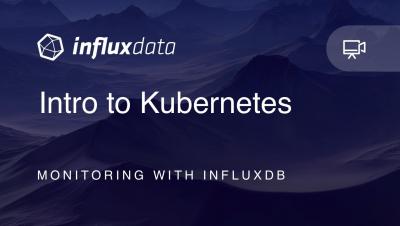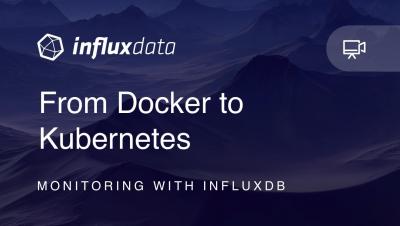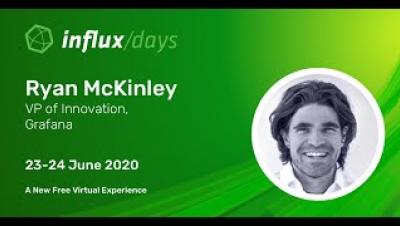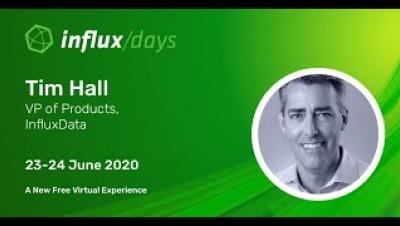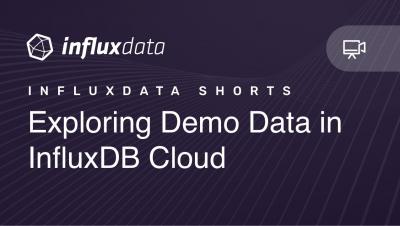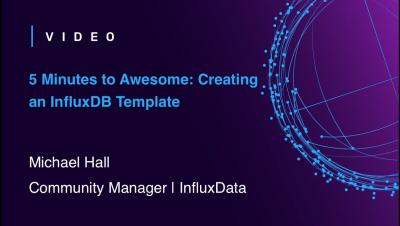Operations | Monitoring | ITSM | DevOps | Cloud
June 2020
Intro to Kubernetes
From Docker to Kubernetes
Production Process Optimization with the inray OPCUA Router and InfluxDB
In a factory environment, collecting data to gain useful insights from various sources is challenging because it requires connecting to many different types of automation systems, plcs and devices that often speak different languages. This is the problem that German industrial software company, inray (specialized in data communication between software systems and components in Industry 4.0, IoT and IIoT) set out to solve for its customers.
Michael DeSa [InfluxData] | Monitoring Methodologies
Ryan McKinley [Grafana Labs] | Grafana and InfluxDB
Tim Hall [InfluxData] | InfluxDB Roadmap
Building a Metrics & Alerts as a Service (MaaS) Monitoring Solution Using the InfluxDB Stack
The larger an enterprise becomes, the more systems and applications there are to monitor, and the more scalable its monitoring system has to be to keep up with business growth. This is the challenge that RingCentral — which provides cloud-based communications and collaboration solutions for businesses — faced and solved.
Paul Dix [InfluxData] | InfluxDays Opening Keynote | InfluxDays
How to Monitor your Modbus Devices with InfluxDB
We released a new Modbus input plugin in Telegraf 1.14 and in this blog I’d like to tell you more about that plugin and how you can use it. Modbus is a messaging protocol for industrial devices that was developed by Modicon (now Schneider Electric) for main-secondary communication between these intelligent devices. It has become an ideal protocol for remote terminal units (RTUs) where wireless communication is necessary.
How to Expand Data Collection for InfluxDB with CloudFormation Templates
In a previous post, I demonstrated how to call InfluxDB APIs from AWS Lambda, but the setup is fairly manual and the results are not portable. Ideally, we as a community can expand and share ways to collect and process time series data. To that end, I want to share a CloudFormation template. CloudFormation is AWS’ infrastructure as code service that lets you define almost any AWS component in a configuration file.
Webinar Highlights: How EnerKey Uses InfluxDB and Azure to Save Customers Millions
EnerKey’s CTO Martti Kontula recently presented on how EnerKey uses InfluxDB Enterprise and Microsoft Azure to power their IoT platform which enables their customers to save millions of euros! Their analytics platform uses sensor data to detect energy usage fluctuations triggered by weather and geospatial data. If you missed attending the live session, we have shared the recording and the slides for everyone to review and watch at your leisure.
Automating Storage Forecasting Using a Time Series Database Puts the Future in Customers' Hands Today
When the stakes are high, every decision is only as good as the information behind it. With the right information, enterprises and vital sectors can confidently make informed decisions. Data becomes a foundation for action — and a source of differentiation. But how do you store the relentless influx of data — especially since data storage costs, amplified by the risk of data loss, are among the top hurdles facing organizations today?
InfluxDB Community Office Hours - June 2020
Webinar Highlights: Modern vSphere Monitoring and Dashboards Using InfluxDB, Telegraf and Grafana
Recently InfluxAce Jorge de la Cruz presented on “Modern vSphere Monitoring and Dashboards Using InfluxDB, Telegraf and Grafana”. Jorge is a Systems Engineer at Veeam Software and has been using InfluxDB for years. In case you missed attending the live session, we have shared the recording and the slides for everyone to review and watch at your leisure.
Exploring Demo Data in InfluxDB Cloud
Become an InfluxDB Inventor
As InfluxDB continues to grow and improve, more and more developers are using it as the platform of choice for their own solutions. Most of these solutions range from filling niche internal needs to solving common problems faced by entire industries, but some of them are extraordinary for their impact, innovation, or how much they push the boundaries of what is possible with the technology. In order to recognize those, we are launching the InfluxDB Inventors program.
Contributing Third Party Flux Packages: A Discord Endpoint Flux Function
Are you currently using Flux with InfluxDB? Have you written a great Flux function that would be useful to the community? If the answers to these questions are “Yes!”, then I encourage you to contribute your awesome work to Flux, so that others can appreciate you and your work. Today, we’re sharing how you can contribute a custom Flux function in a Third Party Flux Package.
Gaining Visibility and Control Over Solar Energy Storage Devices Using InfluxDB Cloud
Energy storage and sustainability are big issues in Hawaii, where oil tankers are shipped in everyday, just to keep the lights on. Resiliency in the energy grid, due to threat of natural disaster, is critical. Energy storage is needed to manage how much solar energy is coming into the market or into the grid. Properly managing the power entering the grid is vital for grid stability since Hawaii has intermittent energy that floods the grid.
Extending InfluxDB with Serverless Functions
Data ingestion and data analysis are the yin and yang of a time series platform. There are many resources to help you ingest data. Typical ingestions are agent-based, imports via CSVs, using client libraries, or via third-party technologies. Once your time series data arrives, analysis completes the circle and often leads to additional data collection, and so on and so forth.
5 Minutes to Awesome: Creating an InfluxDB Template
InfluxDB Cloud Now Beta on Azure
InfluxDB Cloud is now beta on Microsoft Azure and we’d like you to try it out so we can work to make sure it’s ready for general availability (GA). If you’re already familiar with InfluxDB, head over to cloud2.influxdata.com to sign up for your free account. And if you’re not, read on for how to get started.
Flux and Static Analysis
Have you seen this when using the Flux code editor? Pretty neat to be able to get that much help from an editor while writing code. Have you ever wondered how that worked? Today, I’ll take us on a bit of a deep dive on the behind-the-scenes that enable these autocompletion features in the editor.


